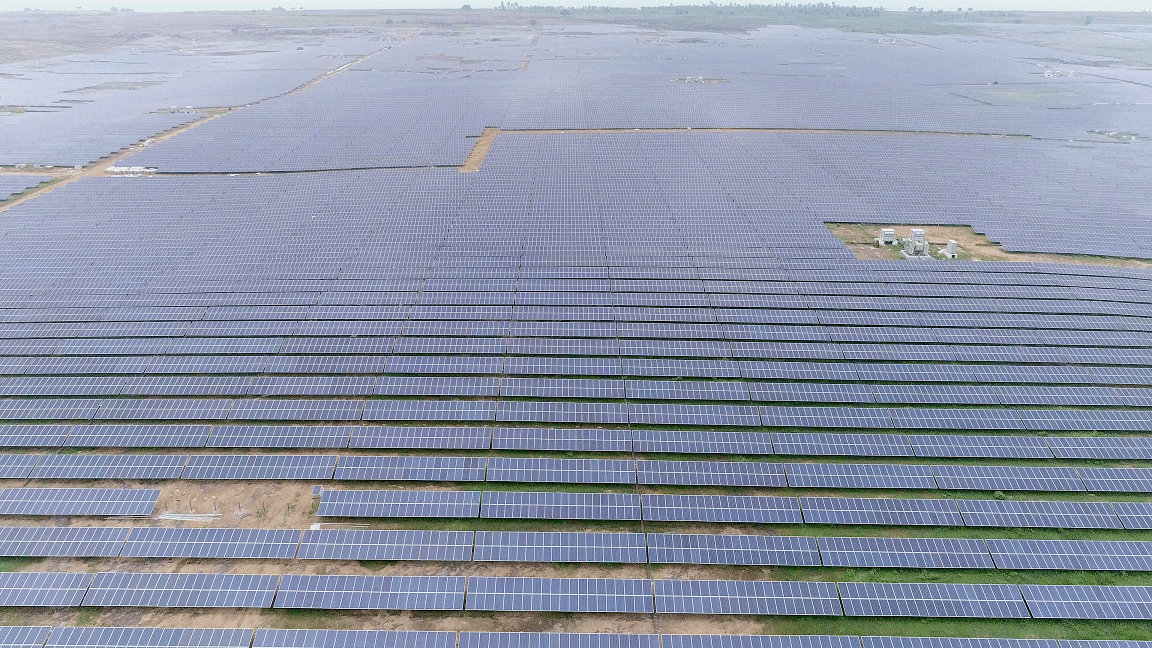A new study by The Energy and Resources Institute (TERI) has estimated India’s total solar potential at 10,830 gigawatts (GW), significantly higher than the previous 2014 assessment of 748 GW by the Ministry of New and Renewable Energy (MNRE). The study revisits conventional solar deployment areas such as barren and unculturable lands and explores additional avenues to expand the country’s solar potential.
The reassessment covers the following categories:
-
Ground-mounted solar PV on barren and unculturable land: 4,909 GW
-
Floating solar PV: 100 GW
-
Rural and urban rooftop solar PV: 960 GW
-
Agri-PV (horticulture crops, coffee, tea plantations): 4,177 GW
-
Rail and road solar PV, building-integrated PV (BIPV), and urban PV: 684 GW (based on estimates from a study by GIZ India in collaboration with CSTEP, EY, and Fraunhofer)
The study uses a land-use norm of 3 acres per MW for ground-mounted and floating solar installations.
Ground-mounted solar on barren land contributes the largest share, with 4,909 GW of theoretical potential. A high-level GIS-based assessment was carried out to identify suitable areas for utility-scale solar installations. Land parcels in mountainous and protected desert zones were excluded, and only 50% of the remaining barren land was considered usable—to ensure space for grazing, biodiversity, and community needs, thereby promoting a balanced land-use strategy.
Among all states and union territories, Rajasthan holds the highest solar potential from ground-mounted solar on barren land at 1,234.6 GW (post-exclusion), followed by Madhya Pradesh at 731.3 GW and Maharashtra at 606.7 GW.
Floating solar potential, estimated at 100 GW, is based on 2.5% of the water surface area of manmade inland reservoirs, barrages, ponds, tanks, and aquaculture systems. Natural water bodies were excluded to avoid disrupting ecological balance.

TERI
Rooftop solar potential is estimated at 960 GW, assuming a per capita rooftop area of 9 sq. m for rural households and 10 sq. m for urban households. Household sizes were assumed to be five members for rural and four for urban areas.

Agri-PV installations over horticulture, coffee, and tea plantations could yield an estimated 4,177 GW, while rail, road, BIPV, and urban PV segments together offer a potential of 684 GW.
In comparison, MNRE’s 2014 estimate of 748 GW was based on using just 3% of wasteland area. TERI’s updated figures come at a critical time as India scales up its clean energy ambitions under its updated Nationally Determined Contributions (NDCs) to the Paris Agreement and its net-zero target by 2070.
India’s revised NDCs (2022) aim for a 45% reduction in emissions intensity by 2030 (from 2005 levels) and 50% of installed power capacity from non-fossil sources. TERI projects that India’s electricity demand could rise to 9,362 TWh by 2070, underscoring the crucial role solar energy must play in decarbonizing the power sector.
This content is protected by copyright and may not be reused. If you want to cooperate with us and would like to reuse some of our content, please contact: editors@pv-magazine.com.









By submitting this form you agree to pv magazine using your data for the purposes of publishing your comment.
Your personal data will only be disclosed or otherwise transmitted to third parties for the purposes of spam filtering or if this is necessary for technical maintenance of the website. Any other transfer to third parties will not take place unless this is justified on the basis of applicable data protection regulations or if pv magazine is legally obliged to do so.
You may revoke this consent at any time with effect for the future, in which case your personal data will be deleted immediately. Otherwise, your data will be deleted if pv magazine has processed your request or the purpose of data storage is fulfilled.
Further information on data privacy can be found in our Data Protection Policy.